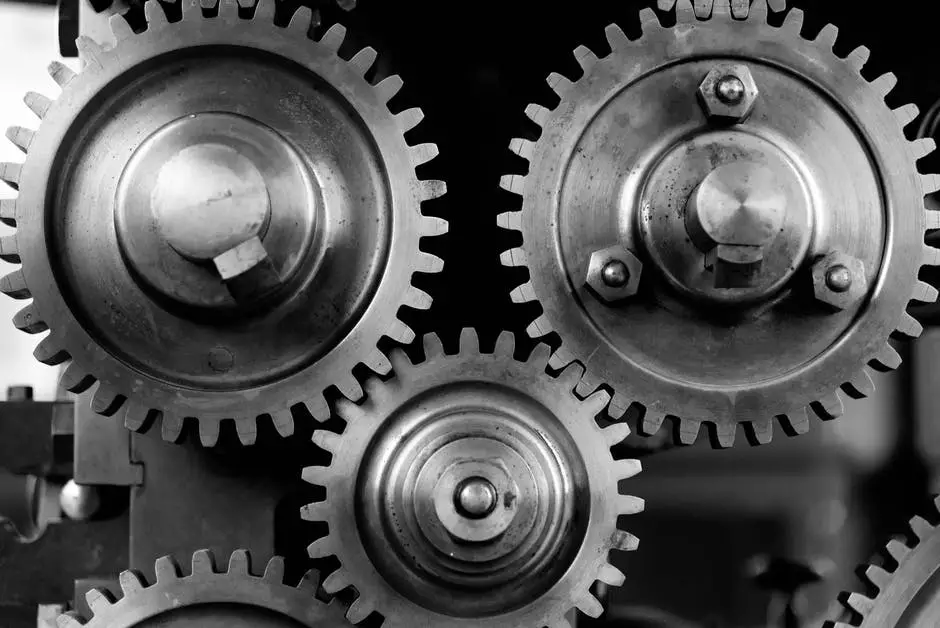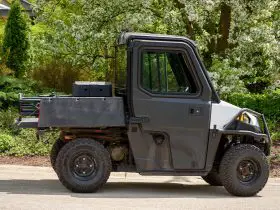You jump in your UTV and speed off to scout a job site, compete in a race, or enjoy a thrilling ride in the open air. Suddenly, your joy ride ends. A breakdown–now you are stranded. It’s a distressing scenario. Could you have prevented this? The answer is yes if you know these 10 signs you should see a UTV mechanic.
Table of Contents
1. Excessive Wear on Tires or Low Tire Pressure
Rough ground exacts a toll on UTV tires. This makes proper tire pressure essential. Check your tire pressure regularly. If you are filling up one tire more frequently than others, you might have a slow leak.
You should also regularly inspect the treads on your tires. Once you have properly elevated or jacked up your UTV, rotate each tire and examine the treads. Look for damage, excessive wear, and any debris that is stuck. Cracked or worn treads indicate you need new tires.
If you do need to replace a tire or two, consider these 8 factors when buying new UTV tires.
2. Leaking Coolant
You can usually tell when your UTV leaks coolant by the spots on your garage floor, but not always. Pay attention to how often you are refilling the coolant. If refills are more frequent than usual, have a UTV mechanic inspect your system.
For proper maintenance, coolant should be flushed and replaced every four or five years. So, if you have not changed coolant for a few years, you should pay a visit to a UTV mechanic near you.
3. Worn CVT Belts
UTVs that are heavily used will experience extreme wear on the continuously variable transmission (CVT) belt. These belts can suffer heat damage and stretching, so you need to keep an eye on them. Signs of damage include belt slipping, loss of tension, cracking, or striations.
Proper maintenance calls for belts to be replaced at least every season. Breaking in a new belt can improve performance and make your belt last longer. Here are some steps for breaking in new belts.
4. Exhausted Battery
If you do not perform basic maintenance on your battery, you run the risk of a breakdown.
Are you connecting your battery to a battery tender between rides? If not, the battery will not maintain a full charge. Are you taking out your battery and storing it during the offseason? If not, the battery will not be as fresh and will not function as long.
A UTV mechanic can tell you if you need to replace your battery. This guide to UTV battery maintenance can also help you diagnose potential issues.
5. Worn-Out Brakes and Low Brake Fluid
Brake pads that are older than four or five years should be replaced, regardless of whether you experience braking problems.
You should always make sure brake fluid stays full (as with the coolant, watch for leaks). Brake fluid will stay fresh for two or three years.
Make sure your brake fluid cap is tightly sealed if you run your UTV through water. Getting water in the brake line will significantly diminish your braking power.
6. Bad Fuel
Before you start up your UTV after the offseason, give your fuel tank a quick smell. You will know if the fuel is bad by its distinct smell. If you have bad fuel in the tank, a UTV mechanic will need to flush the whole system. Adding fuel stabilizers in the offseason prevents fuel from going bad.
A majority of UTVs perform better on high-octane fuels. If you use ethanol-based fuel, your engine may suffer from increased buildup corrosion. A UTV mechanic should have a look.
7. Loose Wiring
Rough, bouncy UTV rides can jostle wiring, so check your wiring harnesses. If you have loose wires, it might be time to take the UTV to a mechanic to make sure electrical components are functioning properly.
8. White Smoke From the Exhaust
White smoke from the exhaust signals you have worn piston rings. When piston rings wear down, engine oil can seep into the cylinder, causing white smoke to come out of the exhaust. A quick UTV repair can fix this problem.
9. Trouble With the Engine and Clutch
If anything seems off with the engine, trust your instincts and let a UTV mechanic check it out. If the engine cuts out frequently, it could be a blocked air filter or an improper combination of oxygen and fuel. But it is wise to have a mechanic make that determination.
You might also be alerted to engine trouble by sound. When your UTV runs properly, the engine will hum and vibrate smoothly after you start it. Even though UTVs are durable, driving across rugged terrain will eventually cause some wear and tear on engine parts. You should go in for a UTV repair if you hear consistent or severe screeching, rattling, or ticking from the engine.
A slipping clutch indicates that it may be worn and in need of adjustment. The most telling sign is when you rev the engine but there is no corresponding drive power.
10. Rough Ride
The terrain is not the only thing that can make for an extra-bumpy ride. Be aware of any extra roughness to your ride, which would suggest your shock absorbers need to be replaced.
Before you see a UTV Mechanic
You might be able to troubleshoot UTV problems on your own. But small issues can become big ones in a hurry. To maintain excellent working condition for your side-by-side, you need to keep problems from progressing.
Proper UTV maintenance can also help prevent breakdowns. You can probably even fix elementary problems like replacing spark plugs. But be careful not to take on more than you can handle. Complex issues require hiring a UTV mechanic.
Seeking More Tips?
Now that you know the 10 warning signs that should prompt you to see a UTV mechanic, you should review these 10 tips for UTV safety or these common mistakes to avoid when driving a UTV. Safe driving ensures you can enjoy many more rides this and every season.
For more helpful information on UTV operation, safety, and maintenance, visit our blog.







